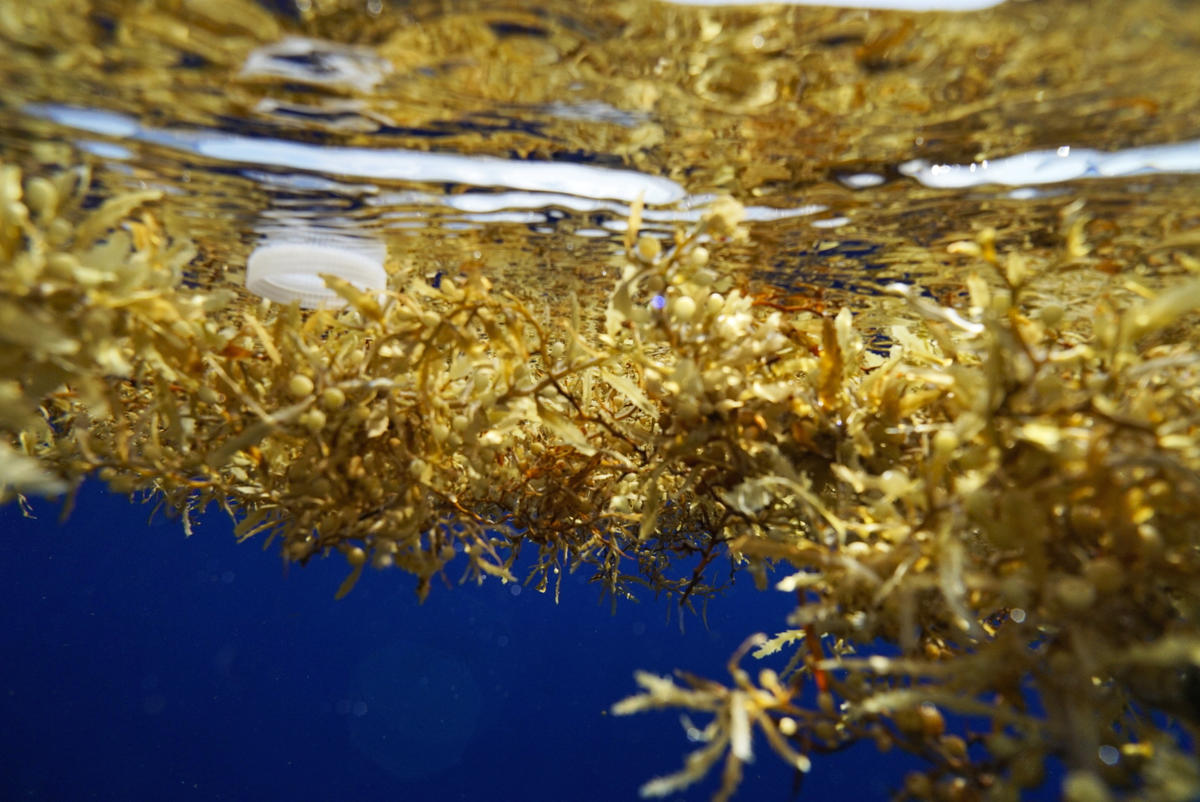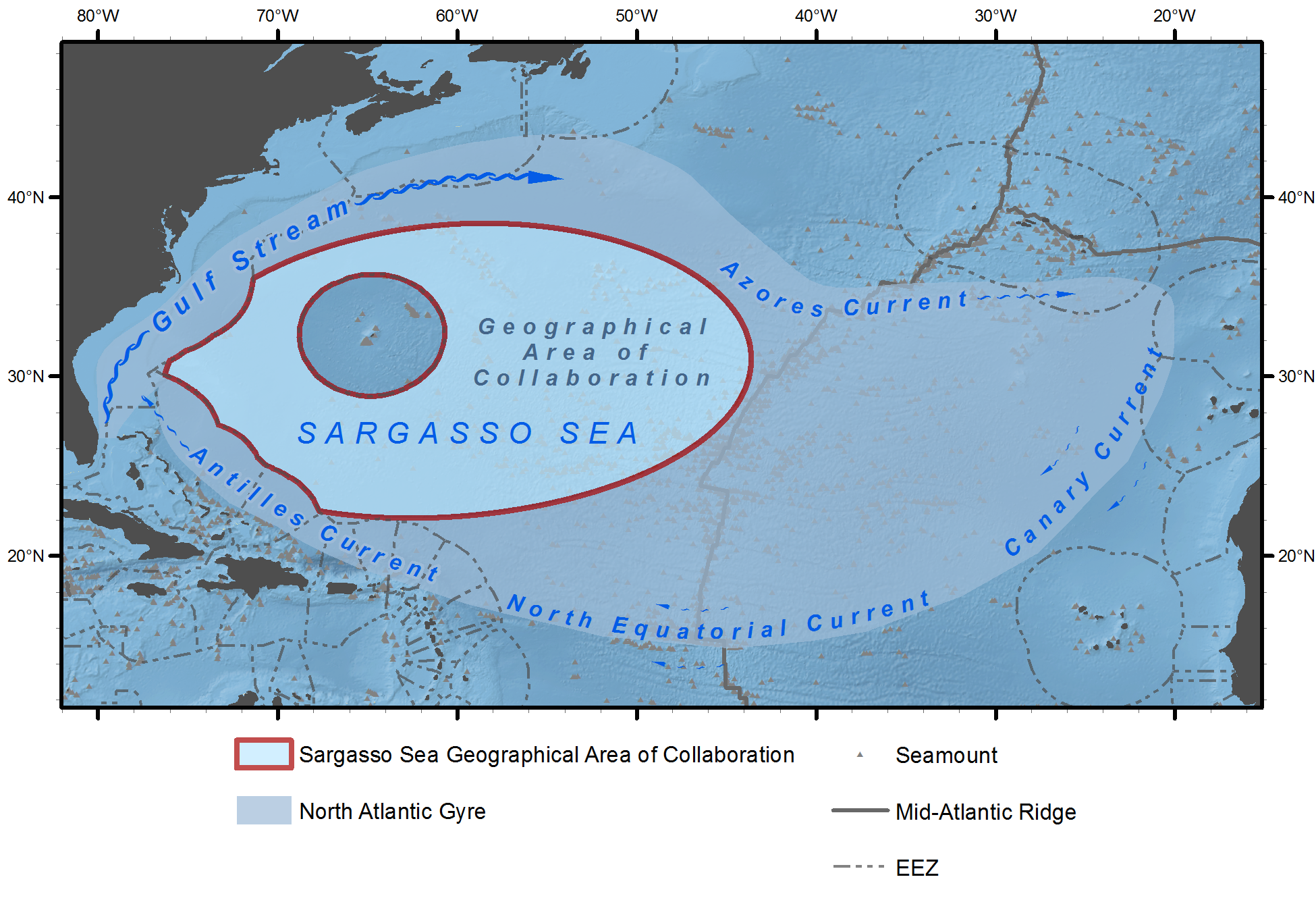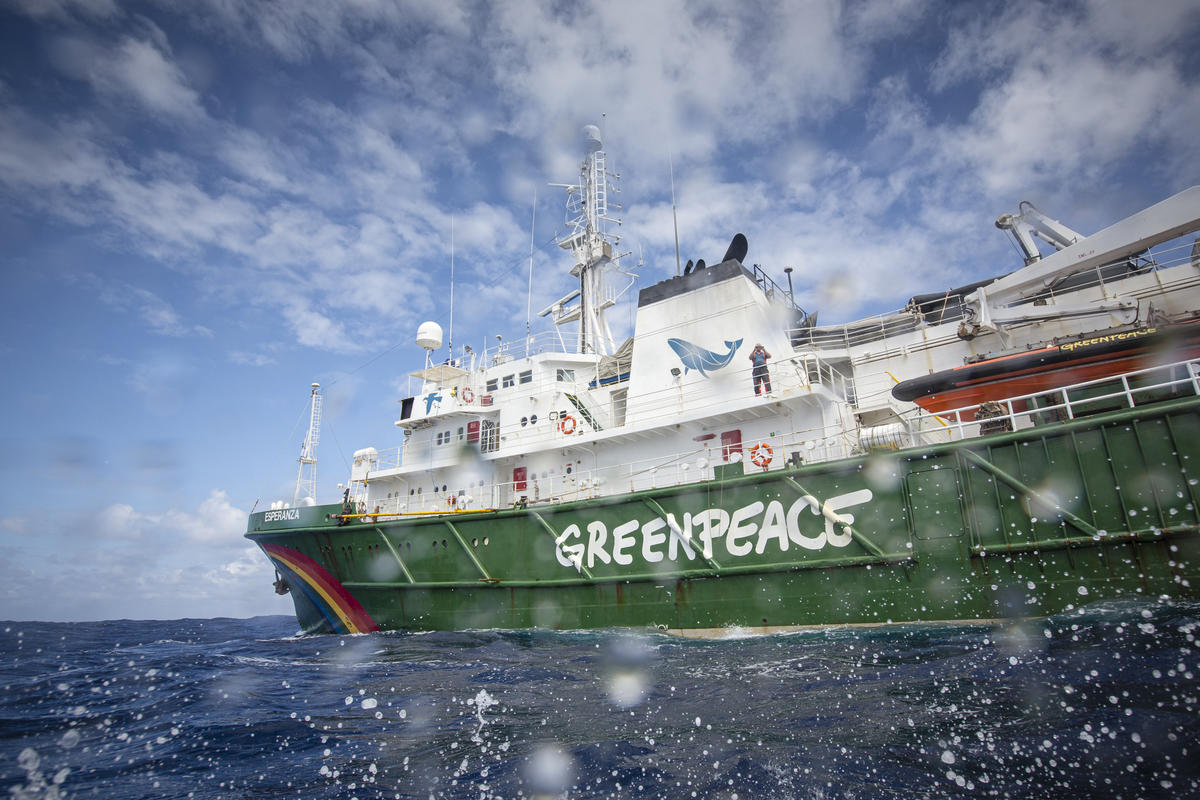Unfortunately, today the Sargasso has a big problem, and that problem is plastic. Just like the Great Pacific Garbage Patch, the Sargasso sits inside a gyre. This means it’s surrounded by ocean currents – like the Gulf Stream – moving in a circle that pushes things inward. Think of it like the center of a whirlpool. This whirlpool is great for keeping Sargassum seaweed inside, which act like a nursery for baby fish and sea turtles, giving ocean wildlife a jump start.
But it also pushes and keeps plastics inside, and this is a major problem for the same wildlife. Turtles and whales choke on it and fish consume it, passing plastic toxins down the food web and back to people who eat seafood.

A white plastic lead is seen floating among sargassum. © Peter Cross / Greenpeace
And we’re embarking on the expedition of a lifetime to make our case for these sanctuaries to the United Nations.

© Marine Geospatial Ecology Lab, Duke University
But how does this work? Sanctuaries and treaties don’t stop ocean currents from carrying plastic…
Well, have you ever had the flu? I have. The worst thing you can do when you’re sick is to do things that further stress your system out. You wouldn’t do anything that makes you sicker. You need rest.
The environment works the same way. When it’s under stress from things like plastic pollution or the climate breakdown, the best thing to do is to protect it from other stress; things like overfishing, heavy vessel traffic and deep sea mining.

MYES
in the North Atlantic ocean. On deck – Jeremy Percy, fisherman.
Greenpeace ship Esperanza is investigating the overfishing of sharks in
the North Atlantic ocean on transit to the Azores. Pole to Pole Tour
2019 © Kajsa Sjölander / Greenpeace
Follow our expedition and help make history by signing the petition for a new Global Ocean Treaty and by helping us pressure big corporations to stop using single-use plastics.
Arlo Hemphill is a senior oceans campaigner at Greenpeace USA on board the Greenpeace ship Esperanza en-route to the Sargasso Sea
Protect the Oceans
Unfortunately, today the Sargasso has a big problem, and that problem is plastic. Just like the Great Pacific Garbage Patch, the Sargasso sits inside a gyre. This means it’s surrounded by ocean currents – like the Gulf Stream – moving in a circle that pushes things inward. Think of it like the center of a whirlpool. This whirlpool is great for keeping Sargassum seaweed inside, which act like a nursery for baby fish and sea turtles, giving ocean wildlife a jump start.
But it also pushes and keeps plastics inside, and this is a major problem for the same wildlife. Turtles and whales choke on it and fish consume it, passing plastic toxins down the food web and back to people who eat seafood.

A white plastic lead is seen floating among sargassum. © Peter Cross / Greenpeace
And we’re embarking on the expedition of a lifetime to make our case for these sanctuaries to the United Nations.

© Marine Geospatial Ecology Lab, Duke University
But how does this work? Sanctuaries and treaties don’t stop ocean currents from carrying plastic…
Well, have you ever had the flu? I have. The worst thing you can do when you’re sick is to do things that further stress your system out. You wouldn’t do anything that makes you sicker. You need rest.
The environment works the same way. When it’s under stress from things like plastic pollution or the climate breakdown, the best thing to do is to protect it from other stress; things like overfishing, heavy vessel traffic and deep sea mining.

MYES
in the North Atlantic ocean. On deck – Jeremy Percy, fisherman.
Greenpeace ship Esperanza is investigating the overfishing of sharks in
the North Atlantic ocean on transit to the Azores. Pole to Pole Tour
2019 © Kajsa Sjölander / Greenpeace
Follow our expedition and help make history by signing the petition for a new Global Ocean Treaty and by helping us pressure big corporations to stop using single-use plastics.
Arlo Hemphill is a senior oceans campaigner at Greenpeace USA on board the Greenpeace ship Esperanza en-route to the Sargasso Sea

No comments:
Post a Comment
Note: Only a member of this blog may post a comment.